10 Tips to an Effective Facebook Ads Strategy for 2025
Want to improve your Facebook Ads performance? You Need a really good strategy. Here are 10 expert tips that you can use to build a winning strategy this year.
Updated May 31, 2024.

In November 2007, the marketing world changed forever when Facebook Ads was launched. From a social network, Facebook became a monetizable machine where businesses could reach their target audience and generate high-quality leads. Having a Facebook ads strategy became a part of doing business online.
There are more than 3 billion active users on Facebook every month. That's more than half of the population connected to the internet (and more than a third of the total global population. If you're a business owner or digital marketing specialist, Facebook is one of the most comprehensive online spots for you to reach your ideal audience.
How to build a Facebook Ads strategy in 2024?
Keep reading and find out more.
Why use Facebook Ads in 2024?
Despite shifting trends and sensitivities, Facebook remains the uncontestable leader of the social media world. With more than 3 billion active users, Facebook has amassed more than one-third of the world's population in one platform - and that's even more impressive when you consider only approximately 5 billion people have internet access.
Facebook Ads is one of the most straightforward ways to put your message and offers in front of your ideal customer:
A wider audience at your fingertips
If you pulled the entire Facebook user base in one place, it would be more than the population of Europe, the Americas, and Africa combined. That's why it's not surprising that the platform remains one of the best places to find a large audience at your disposal.
With Facebook Ads, you can use precise targeting options to reach specific demographics, interests, and behaviors. This means you can tailor your ads to appear in front of potential customers who are most likely to convert into sales.
Detailed targeting options
Facebook isn't just a massive social media platform; it's a technology behemoth. With its extensive data collection, the platform has access to detailed information on its users, including their interests, behaviors, and even purchase history.
This means you can use Facebook Ads targeting options to narrow down your audience based on specific keywords or phrases they have used in their profiles, pages they have liked, groups they are in, and more.
Pro tip: Want to improve your ROAS? Hire one of our top Facebook Ads experts.
Access to analytics
You can't improve what you don't measure. And in digital advertising, this mantra is even more critical. With Facebook Ads, you have access to detailed analytics on your campaigns, including impressions, clicks, and conversions.
This information is vital in helping you understand what works and what doesn't so that you can make data-driven decisions to fine-tune your advertising strategy.
Various ad formats
Facebook Ads offers a variety of ad formats to choose from, including image, video, carousel, and collection ads. This means you can get creative with your ad campaigns and choose the format that best suits your message and advertising objectives. With Facebook's user-friendly ad creation tools, you can quickly create visually appealing advertisements without any technical skills or design experience.
Lower costs
Compared to other advertising channels, Facebook Ads offer relatively low costs per click. In 2023, the average cost per click (CPC) ranged between $0.26 and $0.97, depending on the data source you use. Of course, this number is sensitive to different industries, audiences, products, and types of campaigns - but all in all, Facebook is still one of the more affordable ways to advertise online.
How to create Facebook Ads
One of the best parts about Facebook Ads is that setting up your ads is quite easy (especially when compared to more traditional channels, YouTube ads, and other paid media options.)
Here's what you need to do:
Create a Facebook Business page
Creating a Facebook Business Page is the first critical step towards advertising on the platform. It serves as your brand's profile, allowing you to connect with your audience, share content, and, most importantly, run ads.
Create an Ads Manager account
Once your Facebook Business Page is set up, the next step is to create an Ads Manager account. This is the hub from which you'll manage all your Facebook ads campaigns, including setting budgets, targeting audiences, and analyzing campaign performance metrics.
Note that Ads Manager is focused on the direct management and creation of ads, whereas Meta Business Suite offers broader tools for managing your presence across Facebook's suite of apps and services.
Research your audience
To make sure the right people see your ads, you must first understand who they are. To do that, you can create buyer personas based on:
- Website data
- Current customer data
- Surveys
- Market research
Understand the buyer journey
Not all the people in your target audience are at the same stage of the buyer's journey. Essentially, there are three stages: awareness, consideration, and decision. Understanding which stage your audience is in will help you craft the right ad messaging that resonates with them.
Create your target audience
Facebook allows you to create multiple types of audiences, as follows:
Core audience
A core audience is a broad group of individuals who share similar characteristics, such as demographics, interests, and behaviors. This is an excellent option if you're new to Facebook Ads and still getting familiar with your audience.
Some of the main filters you can use here are:
- Location: This filter allows you to target users based on where they live or where they're currently located. Best used for businesses that have a physical presence or offer location-specific services.
- Age: Specify the age range of the audience you want to connect with. This is crucial for products or services tailored to specific age groups.
- Interests: Target users based on their interests, hobbies, and pages they like on Facebook. Ideal for reaching individuals likely to be interested in your offerings.
- Demographics: Includes detailed characteristics such as education, job title, and relationship status. Use this to reach specific segments within your target audience.
Custom audience
A Facebook custom audience is a more advanced targeting option that allows you to reach people who have already interacted with your brand in some way. For example, you can create a Facebook custom audience of website visitors, email list subscribers, or customers.
Creating a Facebook custom audience is beneficial because it focuses on individuals who are already familiar with your brand, making them more likely to convert into sales.
For instance, you can create audiences based on:
- Interests: Target users based on their interests, hobbies, and pages they like on Facebook. Ideal for reaching individuals likely to be interested in your offerings.
- Behaviors: Focus on users' purchase behavior, device usage, and other activities. Tailor your ads to those who display certain behaviors akin to your ideal customers.
- Connections: This allows you to target users who have a specific kind of connection to your page, app, or events (e.g., friends of those who have interacted with your Facebook page). It is useful for leveraging existing relationships to expand your reach.
Lookalike audience
A lookalike audience is a targeting option that allows you to reach people who share similar characteristics with one of your custom audiences. This is an excellent way to expand your reach and target individuals with high potential to become customers.
Choose your preferred type of Facebook Ad
Aside from the multiple targeting options Facebook Ads allows for, you also get to choose from different types of ads, categorized according to their main campaign goal and the funnel audience:
- Awareness: Use when you want to introduce your brand, product, or service to a new audience. Ideal for businesses looking to build their brand identity and expand their reach. The goal is to make potential customers aware of what you offer and helps you with audience growth (so you can later target them with more persuasive messages.)
- Traffic: Best utilized when the objective is to direct visitors to a website, landing page, or app. It's suitable for businesses aiming to increase the number of site visits, sign-ups, or app downloads, thus widening the conversion funnel.
- Engagement: Engagement ads are perfect when you wish to increase interactions on your Facebook Page or posts. This is crucial for businesses looking to foster a community around their brand, boost the visibility of their content through likes, comments, and shares, or increase event attendance.
- Leads: Use lead generation ads when you want to collect information from users interested in your product or service. They’re especially beneficial for businesses looking to build a database of potential customers for email marketing or sales follow-ups without directing traffic off of Facebook.
- App promotion: Opt for app promotion ads to increase installations of your mobile app. These ads are targeted to mobile users and can directly link to your app's download page on the App Store or Google Play. Ideal for businesses looking to grow their user base on a new or existing app.
- Sales: Conversion ads focus on encouraging purchases or specific actions on your website or app. They are most suitable for businesses with an established audience ready to buy and can be highly targeted towards individuals who have shown interest in your products or services, such as previous website visitors.
Choose your ad format
There are also different ad formats you can choose from, depending on the type of ad you're running and your target audience. These include:
- Single image: As its name suggests, this format uses a single image in your ad, along with text and a CTA.
- Carousel: Allows you to showcase up to 10 images or video content in one ad that viewers can scroll through.
- Video: Use video ads if you have engaging and high-quality video content to showcase your brand, product, or service.
- Instant experience: This format expands to a full-screen experience when clicked and allows for more interactive elements such as videos, images, and carousels. The main difference between a normal ad and an Instant Experience is that the latter can provide a more immersive experience for users.
- Collection: Ideal for showcasing multiple products in one ad. It displays a collection of items from your product catalog, and viewers can click on these items to learn more or make a purchase.
- Lead ads: Use for collecting lead information without redirecting users to a landing page. Ideal for capturing leads quickly and efficiently.
- Dynamic ads: Use these ads to automatically target individuals who have shown interest in your products or services. They are highly personalized and can display different products based on the viewer's interests. This is a great way for e-commerce businesses to reach potential customers with products they're most likely to purchase.
- Sponsored posts: You can also choose to sponsor one of your organic posts on Facebook, which allows you to reach a larger audience and get more engagement on that particular post.
- Stories ads: This type of ads is designed specifically for the Facebook Stories feature. Stories ads are full-screen vertical ads that appear between users' Stories. They can include images, videos, or a combination of both. Most often, they are highly engaging and they can be used to either direct people to a product page or to capture their email address for further nurturing.
Set a budget
Before launching your Facebook Ad, you will need to set a budget and schedule for your advertising campaign. Facebook allows you to set a campaign budget and an ad set budget.
Your campaign's financial planning is flexible, allowing you to establish an advertising budget that can either be a daily expenditure or an aggregate total for the campaign's duration.
Adjustments to this budget can be made at any point to align with your strategy's evolving needs. Additionally, you determine a bid value, which represents the peak amount you're prepared to pay for an ad impression or for a user's specific action on your ad.
Build your creatives
Your creatives are one of the most important element of your Facebook Ads. It is what will catch the attention of your audience, communicate your message effectively, and ultimately drive conversions. When creating your ad creatives, keep these tips in mind:
Make it catchy and entertaining
Howard Luck Gossage famously said, "Nobody reads ads. People read what interests them. Sometimes, it's an ad."
Humans are bombarded with upwards of 10,000 ads every day. From the moment you wake up and grab your phone to the cereal you pour and to the moment you scroll one last time through your Instagram feed before you go to bed, ads are an almost inseparable part of your life.
To make sure your audience stops in their (infinite) scroll and looks at your ad, you must make sure it's visually appealing, entertaining, and stands out from the rest.
Choose high-quality visuals
Your ad's visual elements should be of the highest quality possible because they reflect your brand's image. Whether you're using images or videos, make sure they are clear, relevant to your message, and eye-catching.
Include a clear call-to-action (CTA)
Your call-to-action is what tells your audience what to do next. Make sure it's straightforward, action-driven, and aligned with the objective of your ad. That could be a purchase, an app install, or any other objective your advertising campaign may have.
Keep it concise
In a world where attention spans are getting shorter and shorter, you need to make every word count. Keep your copy concise, easy to read, and straight to the point.
Use video as often as possible
People like video, and for good reasons too: our brains are wired to assimilate information through visual content. Plus, on Facebook, moving images can break the scroll routine and draw your ideal customer's attention before they scroll past your ad.
For ads, stick to short-form videos as they tend to be catchier (and you have a lot of affordable online video maker options that can help you build engaging mobile-friendly videos even if you're on a budget and you want to stretch your advertising dollars as much as possible.)
Test your campaign and publish
Once you have all your elements in place (ad type, ad creative, targeting, budget, etc.), it's time to test your advertising campaign and publish it. It's important to regularly check and analyze the performance of your ads using Facebook Ads Manager. This will help you understand what works best for your audience and make necessary adjustments to maximize results.
Track your metrics
Tracking the right metrics helps you adjust your advertising campaigns and optimize for better results. Some important metrics to track include:
- Click-through rate (CTR): Measures how often people click on your ad after seeing it.
- Conversion rate: Tracks the percentage of people who completed a desired action, such as filling out a lead form or making a purchase, after clicking on your ad.
- Cost per action: Shows the average cost per desired action, such as a click, download, form submission, or conversion.
- Reach: Indicates how many unique people saw your ad at least once.
Don’t neglect organic activity
Ideally, you want to combine your paid efforts with organic activity to increase your overall reach and engagement on Facebook. Make sure to regularly post quality content, engage with your audience, and utilize Facebook features like Stories or live videos to keep your followers interested and active.
By keeping a good balance between paid and organic activity, you can create a strong presence on the platform that will benefit your brand in the long run.
Top 10 best practices for Facebook Ads in 2024
Want to nail your Facebook Ads strategy? Keep the following best practices in mind too:
Keep the ad specs in mind
Each type of Facebook Ad and creative element has specific requirements and limitations, known as ad specs. Adhering to these guidelines is crucial to ensuring your ads display correctly and effectively engage your target audience.
For instance, maximum video file size should always be up to 4 GB for an engagement video. Similar rules apply to image formats and file sizes, video ratio, and other technical specs, so make sure to follow Facebook's official guidelines.
Make your copy stand out
Crafting attention-grabbing copy is pivotal. It's the vehicle that delivers your message and persuades your audience to act. Ensure it's compelling, benefits-focused, and resonates with your target demographic to maximize engagement and conversion.
Use social proof
Social proof, such as customer testimonials or user-generated content, leverages the psychology of trust, showing prospective customers that others have had positive experiences with your brand or product. Incorporating this into your Facebook ads can significantly enhance credibility and encourage engagement.
Always start with a hypothesis
Formulating a hypothesis provides a clear direction for your advertising efforts by setting a testable prediction related to the performance of your Facebook Ads. This approach allows you to systematically evaluate the effectiveness of different ad components, such as visuals, copy, and call-to-action, in achieving your marketing objectives.
A/B test different ad variations
A/B testing, or split testing, involves running two or more variations of an ad simultaneously to determine which performs better based on predefined metrics. This method helps in refining ad elements such as imagery, copy, and CTA, ensuring you invest in the most effective ad strategy.
Use content marketing and Facebook ads
Combining content marketing with Facebook ads amplifies your brand's visibility and engagement by providing valuable information to your audience while also promoting your products or services. It creates a synergy that enhances brand recall and fosters trust, leading to higher conversion rates.
Try the Mille Feuille targeting method
The Mille Feuille targeting method, named after the layered French pastry, involves creating highly detailed audience segments by layering various targeting options like demographics, interests, and behaviors. This approach allows advertisers to reach very specific groups of people, enhancing the relevance and impact of their Facebook Ads.
For example, a beauty brand could target women aged 25-35 who are interested in skincare and have recently searched for makeup tutorials.
Use ABM marketing
ABM, or Account-Based Marketing, is a strategy that concentrates marketing efforts on a clearly defined set of target accounts within a market. It involves personalized marketing campaigns designed to engage each account specifically, basing the approach on the account's specific needs and characteristics.
Make sure your business goal is clear
Having a clear business goal is paramount in guiding your Facebook Ads strategy. This ensures that every element of your advertising campaign is purpose-driven and optimized for success. This clarity helps align your advertising efforts with your overall business objectives, maximizing the return on your investment.
Use Google Ads & Facebook Ads together
Using Google Ads in conjunction with Facebook Ads allows businesses to maximize their online visibility across two of the most powerful advertising platforms. This strategy enables reaching a broader audience by leveraging Google's extensive search capabilities and Facebook's highly targeted social environment.
For example, you can run Google Ads until you gather 100-500 clicks, collect the data, and then feed it into Facebook lookalike audiences to cast a net for a wide range of people who are similar to those who have already clicked on your ads.
Facebook Ads: an integral part of your marketing strategy
Sales funnels rarely happen on one channel only. If you want to ensure your sales funnel is always full (with actual prospects, not just random people on the internet), you must use multiple channels to meet your ideal audience where they are. Because so many people use Facebook daily, this platform is a perfect place for social media advertising, particularly when it comes to eCommerce products (but not only.)
From the dynamic product ads to the options you have to personalize your call to action button, how you can use your email list for paid targeting, and the ability to retarget website visitors, Facebook Ads offer a wide array of tools and features to help businesses reach their target audience and achieve their advertising campaign objective.
Facebook is a social platform, though, so remember that individual users don't come here to look at ads or become "potential buyers". They come here to socialize, get entertained, read the news, and connect with friends and family. As such, your entire social media strategy needs to be crafted in a way that doesn't disrupt the user experience but rather integrates seamlessly into their social media browsing.
Your entire social media marketing strategy (paid and organic) should revolve around providing value to your target audience. Tailor your content and ads to meet their needs and interests rather than solely focusing on promoting your products or services. This approach will help build brand loyalty and trust with your customers, making them more likely to engage with your ads and make a purchase.
Need help with your paid Facebook efforts? Hire a top paid ad agency vetted by Mayple. Contact us and we'll match you with the best one for your business' specific needs.








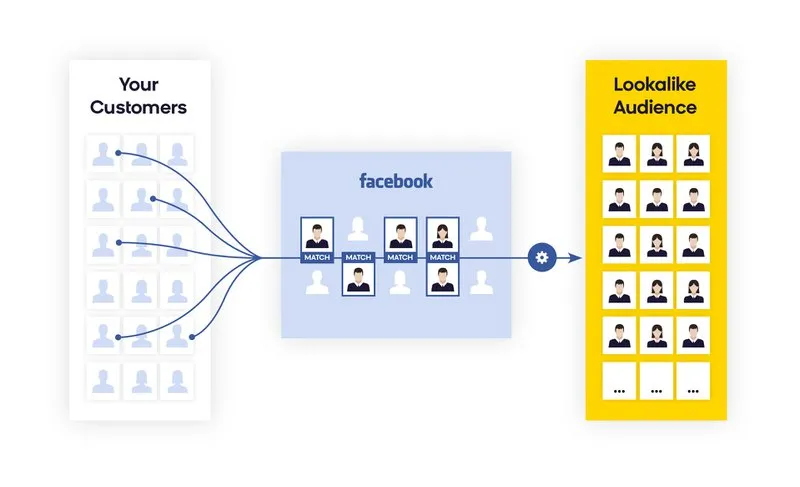
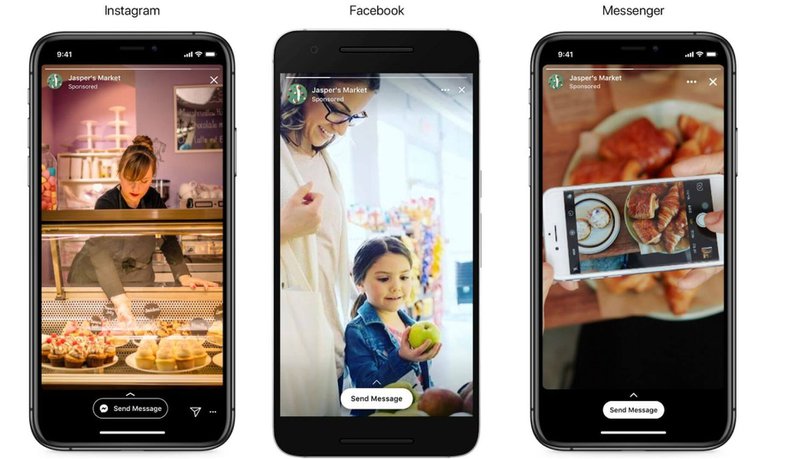
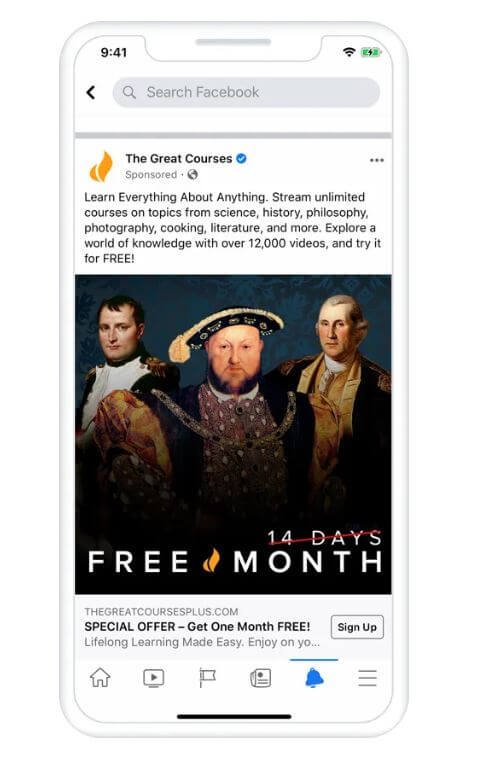
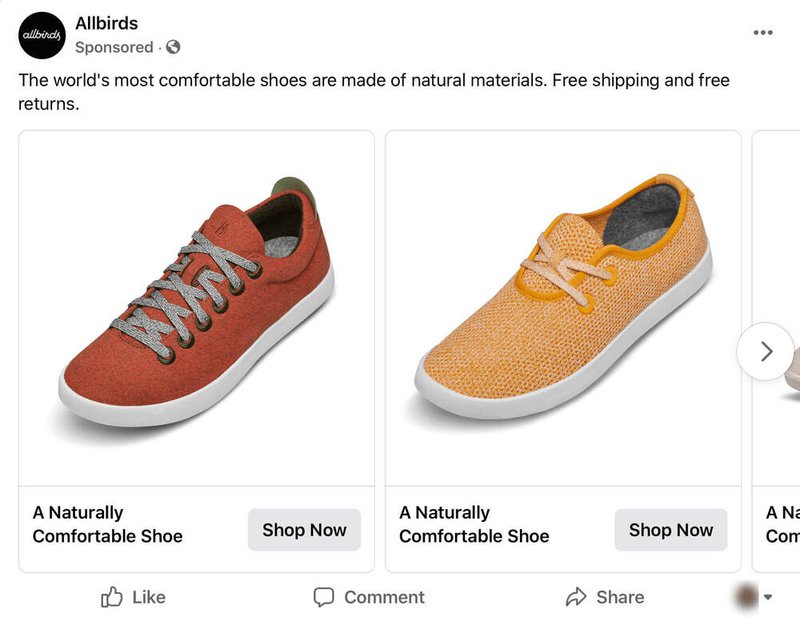
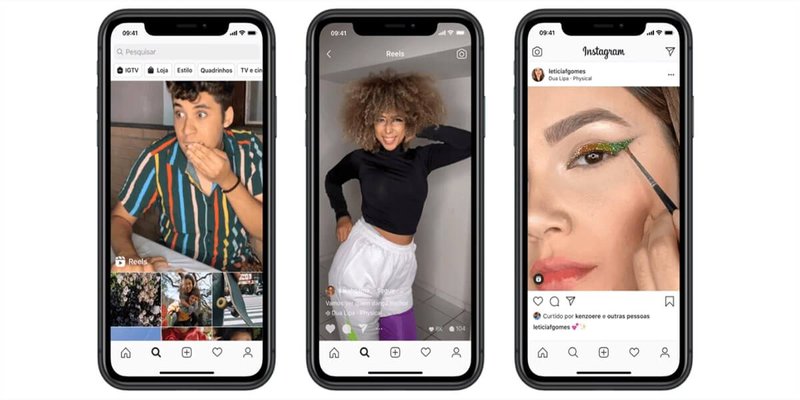
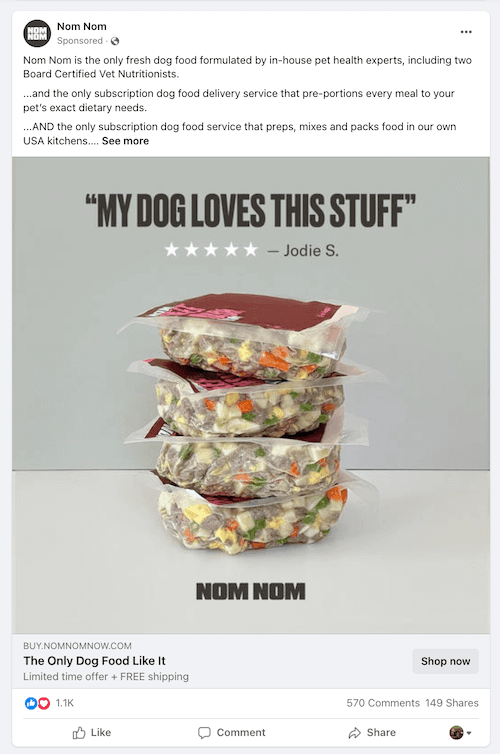

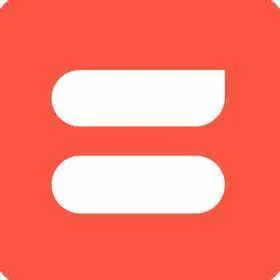




![The Ultimate Guide to Social Media Marketing: Tips, Strategies & Tools [{year}]](https://entail.mayple.com/en-assets/mayple/fit-in/280x280/637235283d1059598965dfd0_socialmediamarketing1_a8f42d67f17ada7c19a1fdf4471a18d7_2000-1699775614609.jpg)